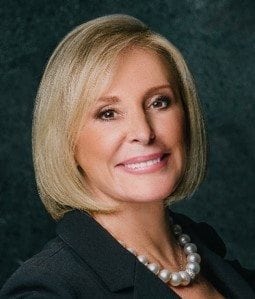Face to face, they still stand- a girl and a bull. On the day the permit for a bronze sculpture dubbed Fearless Girl was scheduled to expire, the symbolic showdown persists. New York Mayor Bill de Blasio says she’ll stay put for a full year for her ability to “inspire everyone at a moment when we need inspiration,” as de Blasio told media just last week.
Fearless Girl is already accomplishing her intended goals. She was placed on Wall Street by State Street Global Advisors, a firm not exempt from criticism over gender diversity, as a challenge to corporate boards across America to add more women to their ranks. The statue has ignited a nationwide conversation.
But, our little statue must not be confused for a pioneer. Many women have stood up to the figurative bull before her, slowly paving the way towards gender diversity.
Well before selfies with Fearless Girl were spreading across the internet, there was Janice Ellig cultivating ideas and building networks. Ellig, a master recruiter for C-Suite executives and board directors, is a living, breathing Fearless Girl.
The real thing
Ellig says she was delighted to see the impact Fearless Girl has brought to her hard-fought cause. She founded the Women’s Forum of New York’s Corporate Board Initiative. This organization of New York’s top women leaders is encouraging the placement of more women on in more leadership positions.
“We don’t have many companies approaching parity,” Ellig says. “I think State Street Global Advisors has done a wonderful job raising awareness. That’s exactly why we want to invite them to speak at our Breakfast for Corporate Champions [an event that recognizes companies leading the way to gender balance on corporate boards].”
The Women’s Forum of New York (WFNY) is driven to make progress and make it faster. Women hold less than 20-percent of board seats in S&P 500 companies. For the last 20 years, gender diversity has been growing by only 0.5 percent each year.
Talking about an evolution
Ellig says quality and gender parity are not mutually exclusive, that advocating for women in C-Suite and board positions is advocating for success.
“You never compromise quality. It’s found in both men and women.”
However, she says the terms by which we define quality must evolve. When a corporation is looking to fill a top executive position, the majority of women candidates get knocked out of the running because they don’t have the sought-after CEO experience. In finance, for example, men and women fill entry-level positions at practically the same rate. But when it comes to the upper levels of executive management, women are scarce. At no fault to these women, the odds are simply stacked against them.
To avoid this bias, Ellig says the best approach “is redefining what it means to be qualified.”
“Evaluate the competencies and experiences you need, then look in all pools of candidates. You will find a highly-qualified, diverse group of people.”

It pays to bet on women
A 2016 study by the Peterson Institute for International Economics and EY shows a relationship between women in leadership positions and a company’s profitability. The research showed companies with more than 30 percent female leadership, on average, enjoyed higher net profits by about 6 percentage points.
“We need to recognize the great values women bring,” Ellig says, quite literally.
Some countries set quotas to encourage gender diversity. Iceland, for example, in addition to requiring companies to prove they offer equal pay to men and women, has achieved 44% female representation on corporate boards because of its mandates.
Ellig doesn’t think such quotas would fly back home.
“In the US, we are a much bigger country,” she says. “We don’t like someone telling us what to do. The supply of highly talented, experienced women is there. We just need some pressure to speed progress up.”
The big idea
So, here’s how Ellig proposes we get there. She says if every board in America filled every other opening with a woman, then by 2025 the US could reach parity.
“It can be done, but you have to plan, to be focused and to be intentional.”
Ellig says that’s what keeps her motivated. But, we wondered, what gives this real life Fearless Girl the statuesque courage to stand up to what she calls the “last frontier of male-led companies?”
Before Janice Ellig, there was her mom. She wasn’t college-educated and she certainly wasn’t working in corporate America. But she forged a path for her daughters to follow because she “worked hard, she focused on what is fair and she always gave back.”
So Ellig leaves us with this reminder, that with every little girl staring down her challenges, there came a woman before her to push her closer to the finish line.
Like what you’re reading? Access HER magazine’s monthly publication in iTunes or Google Play – it’s where we feature powerhouse women you can learn from and share exclusive content you won’t find here.








